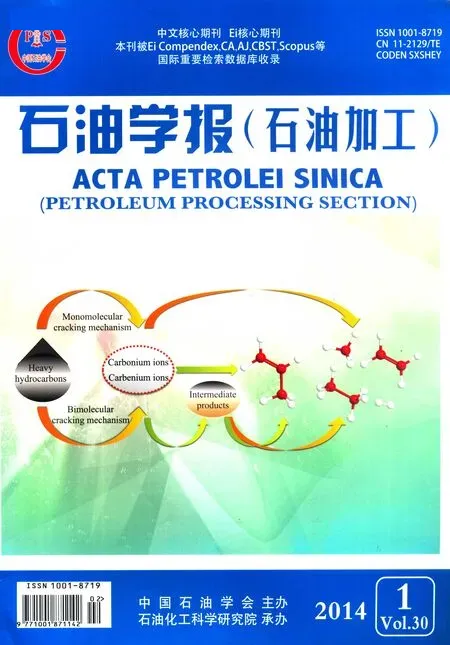表面氨基改性制备高负载量高分散性钯/堇青石整体式催化剂
周 放,朱玉超,周永华,叶红齐,金一粟
(中南大学 化学化工学院,湖南 长沙410083)
Palladium catalyst is commonly used for catalytic hydrogenation reactions[1-2].To improve the utilization ratio of palladium and eliminate the diffusion limitation in micropores,palladium is normally loaded in a depth of outside surface of supports.Song et al[3]and Zhu et al[4]have made great efforts to prepare egg-shell silica support for palladium catalyst,which exhibited higher activity and product selectivity in CO hydrogenation to methanol and acetylene hydrogenation to ethylene reactions.Liu et al[5]prepared egg-shell Pd/α-Al2O3catalysts with different active layers and the higher activity was achieved for the thin layer distributed Pd catalyst in the synthesis of dimethyl oxalate from CO and methyl nitrite.Monolithic catalysts hold advantages of low pressure drop,short diffusion distance and easy scaling-up due to its open structure like honeycomb ceramic[6]. Meanwhile,the utilization ratio of noble metals on monolithic catalysts can be greatly enhanced since they are completely loaded onto the surface of support channels.Therefore,the monolithic catalysts based on cordierite (2MgO·2Al2O3·5SiO2)have been widely used in the catalytic conversion of automobile exhaust,catalytic combination of volatile organic components and some hydrogenation reactions.However,because of the low surface area,it is still agreat challenge to load metals directly onto the monolithic supports.Subsequently,a layer of alumina was carefully fabricated as washcoat for loading noble metals[7].And the final performance of monolithic catalysts is greatly dependent on the washcoating technique.To facilitate the utilization of monolithic catalysts in more reactions,it is necessary to develop simple methods of loading metals for monolith without washcoat.
It is reported that the surface of silica powder and zeolite channel can be successfully functionalized by silane grafting agent with amino or mercapto groups for the adsorption of heavy metal ions[8],gas[9]and proteins[10].Several publications are concerned with the preparation of particle catalysts,such as highly dispersed Au/SiO2,Pt/MCM-41and V2O5/TiO2, via surface functionalization by aminesilanes[11-13].In addition,the immobilization of orseradish peroxides onto cordierite through aminesilica graft was reported[14].It is indicated by these works that surface functionalization is an effective way to improve the immobilization of metal nanoparticles,which,however,was not explored as for the monolithic support yet.
A simple method was presented to prepare monolithic palladium catalyst with improved loading and dispersion without washcoat in this paper.Cordierite monolith was firstly functionalized by amino groups with 3-aminopropyltrimethoxysilane,and then Pd was loaded with palladium chloride as precursor by static interaction.The hydrogenation of styrene was used as model reaction to evaluate the activity of prepared catalysts.
1 Experimental
1.1 Materials
Commercial cordierite cast in the form of monolith(denoted as M)with the size ofφ40mm×15mm and the pore density of 62cells per square centimeter (cpss)supplied by Jiangxi Xingfeng chemical packing company of China.The grafting agents, 3-aminopropyltrimethoxysilane (APTS,Purity of more than 98%) andN-[3-(trimethoxysilyl)-propylethylene]diamine (TPED,Purity of more than 95%)were purchased from Meryer company of China.Palladium chloride with Pd mass fraction of 60%was purchased from China reagents Ltd.All reagents were used as received.
1.2 Functionalization of cordierite monolith and preparation of monolithic catalyst
1.2.1 The graft process of cordierite monolith
A cordierite monolith was suspended in 130mL toluene solution of APTS or TPED and stirred at 80℃for a period of time.The monolith sample was then taken out,washed with water and ethanol for four times alternately,and dried at 60℃for 12h.The resulting sample was the cordierite monolith,denoted as M-A(a-b)or M-T(a-b),respectively,in which A and T refer to the APTS and TPED,and a and b in parentheses correspond to the graft time with unit of hour and the initial amount of grafting agent(Mass ratio of grafting agent to cordierite),respectively.
1.2.2 Preparation of monolithic Pd catalyst
Pd was loaded on the functionalized cordierite monolith by wetness impregnation method with H2PdCl4aqueous solution followed by drying at 60℃for 6h,calcined at 350℃for 2hand reduced by NaBH4solution.The monolithic Pd catalysts were obtained and denoted as M-A (a-b)-Pd and M-T(a-b)-Pd,respectively.For comparison,the monolithic catalyst with Pd loaded on the original cordierite monolith without any functionalization was prepared and denoted as M-Pd.The monolithic catalyst with the monolithic support pretreated by 30%mass fraction nitric acid refluxing 2hwas denoted as M-acid.The monolithic catalyst with the cordierite monolith pretreated by acid and then grafted with APTS was denoted as M-acid-A(ab)-Pd.
The loading of Pd onto the surface of support channels via grafted amine groups could be illustrated by Fig.1.
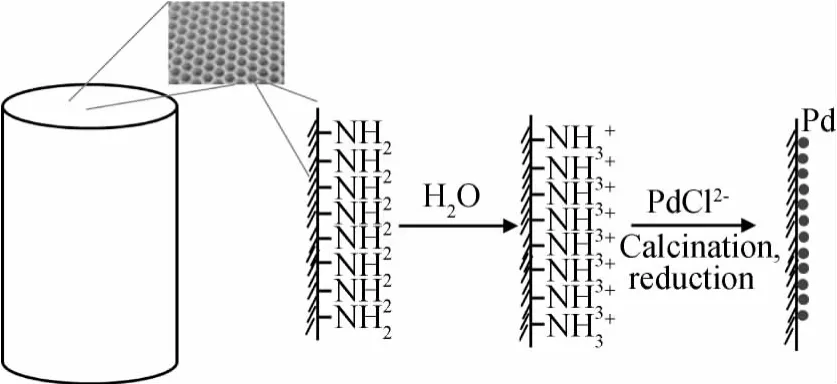
Fig.1 Schematic of Pd loading onto the surface of support channels via grafted amine groups
1.3 Characterization of monolithic catalyst
The Brunauer-Emmett-Teller (BET)surface areas of monolith support before and after acid treatment were calculated from N2physisorption data measured at 77Kwith Quantachrome Monosorb Autosorb apparatus (America).The surface groups of cordierite monolith before and after functionalizing were determined by Fourier transform infrared spectroscopy (FT-IR )measurement on Nicolet6700infrared spectrometer(America).The amount of grafted amine groups was titrated by 0.0101mol/L HCl solution with dropping rate of 0.03mL/min associated to a pH meter[15].X-ray diffraction (XRD)measurement of monolithic catalyst was carried out on 3014-Z2X-ray diffraction apparatus (Japan)with CuKαradiation and scanning rate of 5°/min.The actual amount of Pd loading on monolithic catalyst was determined by Perkin Elmer Optima5300inductive graft plasma atomic emission spectrometer (ICPAES,America).The size of Pd particles on monolithic catalyst was examined by using JEOL JEM-2100transmission electron microscopy(TEM,Japan)operated at 200kV.
1.4 Catalytic hydrogenation activity of monolithic catalysts
Catalytic performance of the monolithic catalysts was evaluated with the hydrogenation of styrene to ethylbenzene as model reaction,which was carried out at 25℃in self-made batch reactor equipped a mechanical stirrer.The liquid feed was allowed to flow the channels of monolith catalyst when it rotated in high speed.For each test the catalyst was pretreated in H2flow (30mL/min)at 25℃for 1hwith 100mL ethanol as solvent,and then styrene (1mL)together with the internal standardn-decane (0.1mL)was added into.The reaction was performed at 25℃and under atmospheric pressure in H2flow with stirring,and monitored by gas chromatographic analysis(SHIMAZU 2010,column RTX-1(0.25mm ×0.25μm×30m))of the effluents withdrawn from the reactor every 10min.The absence of external diffusion limitation was verified by the experiments carried out under different stirring rates.Hydrogenation of styrene over supported Pd catalysts was reported to be zero order as for styrene[16], so the molar number of styrene decreased linearly with the reaction time,as shown in Eq.(1).In Eq.(1),rSTrefers to the reaction rate of styrene, mmol/min.nSTrefers to the molar number of styrene,mmol.trefers to the reaction time,min,andkrefers to the coefficient of reaction rate.For zero order reaction,kis a constant,mmol/min.

2 Results and Discussion
2.1 Characterization results of monolith support and monolithic Pd catalysts
2.1.1 FT-IR analysis
The FT-IR spectra of original monolith and those being treated by acid or aminesilane functionalization were shown in Fig.2.The peaks at 1179and 907cm-1visible in all samples could be attributed to Si—O—Si bending and stretching.Si—OH vibration peak at 3659cm-1in Fig.2(2)was clearly enhanced,compared with that in Fig.2(1),indicating that the surface of monolith became rich in silica after acid treatment.The—NH2vibration peak at 3443cm-1presented in Fig.2(3)revealed that amine groups were successfully grafted onto the surface of monolith.
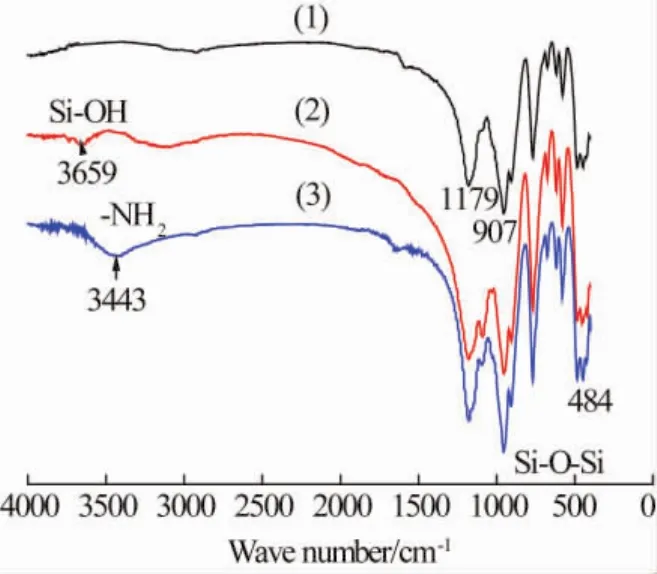
Fig.2 FT-IR spectra of three monolith supports
2.1.2 XRD analysis
XRD pattern of M-A (12-0.015)-Pd catalyst was shown in Fig.3.It is clear from Fig.3that the indialite (hexagonalα-cordierite)was the major phase,while Al-Mg spinel(MgAl2O4)phase was trace one.In addition,the XRD peaks of Pd could be clearly observed at 40.1°(111),46.6°(200)and 68.1° (220),while no XRD peaks of palladium oxide was observed.

Fig.3 XRD pattern of M-A(12-0.015)-Pd catalyst
2.1.3 TEM analysis
The TEM images of Pd nanoparticles supported on the original monolith,APTS grafted monolith,TPED grafted monolith and that firstly acid pretreatment and then APTS grafting were shown in Fig.4.It can be seen from Fig.4(a)that the Pd particles loaded on the original monolith were poorly dispersed.When a proper amount of amine groups was introduced,most Pd particles were homogenously dispersed with the size of 5-10nm,seen from Fig.4(b).When the amount of amine groups increased further,Pd particles became larger,as shown in Fig.4(c)and Fig.4(d).When TPED acted as modifying agent with the same dosage as APTS,more Pd particles were loaded with a slightly increased size,as shown in Fig.4(e),which would be clearly reflected by the activity values in the following text.For the Pd catalyst with the support monolith first treated by acid and then APTS grafting,Pd particles were rather poorly dispersed,as shown in Fig.4(f).
2.2 Effects of APTS grafting conditions on the amount of grafted amine groups and Pd loading of M-A(a-b)-Pd catalyst
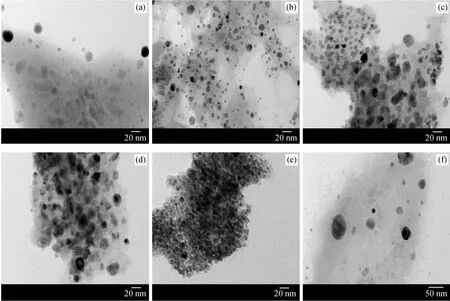
Fig.4 TEM images of Pd nanoparticles supported on monolith after various graft processes
Effects of grafting time(a)and initial amount of APTS(b)on the amount of grafted amine groups and Pd loading of M-A(a-b)-Pd catalyst were showed in Fig.5and Fig.6,respectively.From Fig.5it can be seen that with the increase of grafting time,both the amount of grafted amine groups and Pd loading increased dramatically within 12h.When the grafting time exceeded 12h,the Pd loading kept almost constant,though the amount of amine groups still increased.For the effect of the initial amount of APTS,a similar tendency was shown in Fig.6.Whenm(APTS)/m(Support)exceeded 0.015,Pd loading increased slowly with the amount of grafted amine groups increasing.It is referred that Pd particles could only be anchored by the accessible amine groups.When the density of amine groups was too high,not only “free”amine (≡RNH2), but also zwitterion-like speciespresented.Confinement of“free”amine groups in the silica matrix promoted the formation of the zwitterions,and the zwitterions-like species were less interactive to Pd ions than to the free ones.
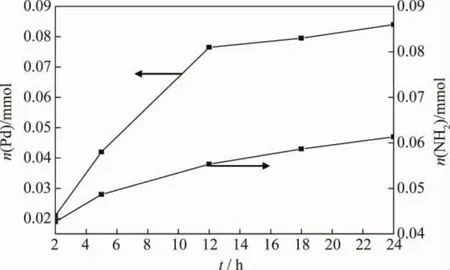
Fig.5 Effects of grafting time(a)on the amount of grafted amine groups and Pd loading of M-A(a-b)-Pd catalyst
2.3 Catalytic hydrogenation performance of M-A(ab)-Pd and M-T(a-b)-Pd catalysts
The relations of Pd loading and hydrogenation catalytic activity with the amount of grafted amine groups in M-A (a-b)-Pd catalyst were shown in Fig.7.In comparison to M-Pd(Pd supported on the original monolith support without amine groups),M-A(a-b)-Pd catalysts (Pd supported on amine grafted monolith)exhibited much higher hydrogenation activity,indicating that the introduction of amine groups onto the monolith surface greatly benefited the high dispersion of Pd particles.It should be noted that with the increase of amine groups as well as the Pd loading,the hydrogenation activity of the catalyst first increased and then decreased gradually.When the amount of amine groups was 0.035mmol(M-A(12-0.015)-Pd catalyst),the catalyst exhibited the highest hydrogenation activity.
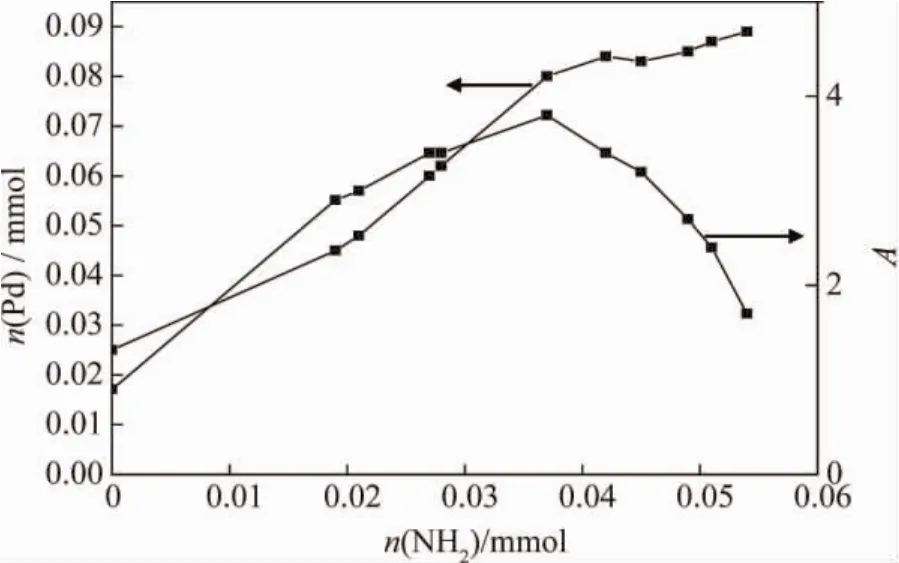
Fig.7 The relations of Pd loading and hydrogenation catalytic activity(A)with the amount of grafted amine groups in M-A(a-b)-Pd catalyst
Compared to APTS with one amine group in molecule,TPED was of two amine groups in molecule.The Pd loadings of M-A(a-b)-Pd and M-T(a-b)-Pd catalysts,and their catalytic activities for styrene hydrogenation were shown in Table 1.It is found that the Pd loading of M-T(a-b)-Pd catalysts was raised one fold more than that of M-A(a-b)-Pd(from 0.049mmol to 0.130mmol),indicating that both the primary amine (—NH2)and secondary amine(—NH—)groups in TPED molecules acted as the anchoring point for Pd particles,which greatly increased the Pd loading in catalyst,however,the dispersion of Pd particles was slightly decreased(See from Fig.4(e)).Whenm(APTS)/m(Support)was increased from 0.005to 0.015,Pd loading was further increased at the expense of lower dispersion.
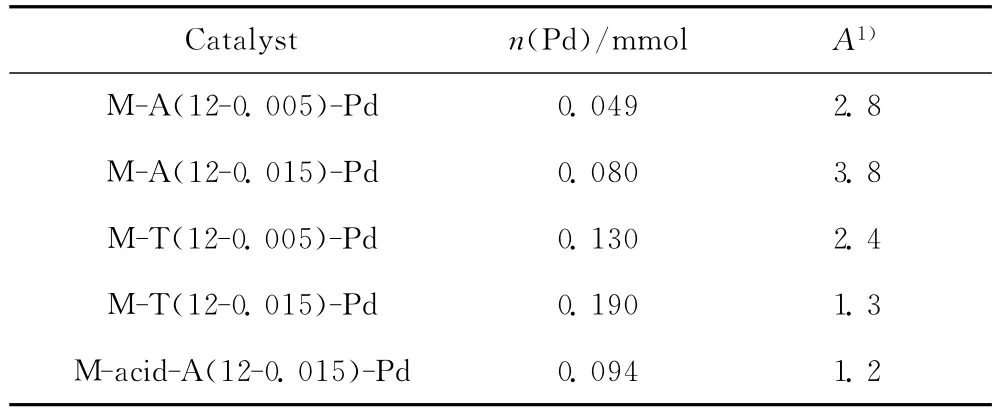
Table 1 Pd loadings of M-A(a-b)-Pd and M-T(a-b)-Pd catalysts and their catalytic activities for styrene hydrogenation
Acid pretreatment of cordierite monolith is a common way to raise its surface area.In this study,the BET surface area of monolith increased from 0.2 to 75m2/g after acid pretreatment.However,the further amine grafting for the acid pretreated monolith led to a decrease of Pd dispersion,which could be reflected from Fig.4(f)and activity value in Table 1,though the Pd loading was increased.This is likely attributed to the change of the monolith surface composition after acid pretreatment.Al and Mg were reported to be dissolved by acid which led to the increase of surface acidity[17].The graft process of APTS onto the oxides surface was conformed to be a flip mechanism,that is,the amine groups were first physically absorbed on the surface and then the APTS molecular was turned over[19].The increased surface acidity of monolith after acid treatment made APTS not easy to turn over,resulting in the poor dispersion of Pd particles.
The stability of M-A-(12-0.015)-Pd catalyst was tested by four cycles of styrene hydrogenation in batch mode.It is found that the original performance of M-A-(12-0.015)-Pd could still be well kept even after four reaction cycles and no Pd was detected by ICP-AES in the reactant solution,indicating that Pd particles were steadily immobilized on the monolith surface.
3 Conclusion
A simple method to achieve high Pd dispersion as well as increase of Pd loading on cordierite monolith without a washcoat layer was reported.The cordierite monolith could be functionalized with aminesilanes,which greatly improved the loading and dispersion of Pd particles.The resulting monolithic Pd catalyst exhibited much higher activity in hydrogenation reaction of styrene than the catalyst without functionalizing.Obvious effects of functionalizing conditions,such as the graft time,the initial amount of aminosilane and the amount of grafted amine groups in aminosilane on the loading and dispersion of Pd particles existed.The highest dispersion of Pd particles could be obtained by functionalizing monolith with APTS under the conditions ofm(APTS)/m(Support)of 0.015at 80℃for 12h,which led to a proper surface density of amine groups.The utilization of TPED could improve the Pd loading by more than one fold,while the dispersion of Pd was decreased.In addition,the acid pretreatment of monolith was not beneficial to the functionalizing of monolith by aminosilanes and the dispersion of Pd particles because of the change of the monolith surface composition.
[1]HARRAZ F A,EL-HOUT S E,KILLA H M,et al.Palladium nanoparticles stabilized by polyethylene glycol:Efficient,recyclable catalyst for hydrogenation of styrene and nitrobenzene[J].Journal of Catalysis,2012,286:184-192.
[2]ZHOU Y H,LI X Y,PAN X L,et al.A highly active and stable Pd-TiO2/CDC-SiC catalyst for hydrogenation of 4-carboxybenzaldehyde[J].Journal of Materials Chemistry,2012,22:14155-14159.
[3]SONG J R,WEN L X,SHAO L,et al.Preparation and characterization of novel Pd/SiO2and Ca-Pd/SiO2eggshell catalysts with porous hollow silica[J].Applied Surface Science,2006,253(5):2678-2684.
[4]ZHU Q F,FU Y,WEN L X,et al.Preparation and performance of novel monolithic catalysts with porous hollow silica nanoparticles as washcoat[J].Journal of Beijing University of Chemical Technology(Natural Science),2010,37(4):17-23.
[5]LIU X F,JI Y,LI W,et al.Preparation and catalytic activity of egg-shelled catalyst Pd/α-Al2O3[J].Chinese Journal of Catalysis,2009,30(3):213-217.
[6]KREUTZER M T,DU P,HEISZWOLF J J,et al.Mass transfer characteristics of three-phase monolith reactors[J].Chemical Engineering Science,2001,56(21-22):6015-6023.
[7]MEILLE V.Review on methods to deposit catalysts on structured surfaces[J].Applied Catalysis A:General,2006,315(23):1-17.
[8]HO K Y, MCKAY G,YEUNG K L.Selective adsorbents from ordered mesoporous silica [J].Langmuir,2003,19(7):3019-3024.
[9]XU X,NOVOCHINSKII I,SONG C.Low-temperature removal of H2S by nanoporous composite of polymermesoporous molecular sieve MCM-41as adsorbent for fuel cell applications[J].Energy &Fuel,2005,19(5):2214-2215.
[10]CAUVEL A,RENARD G,BRUNEL D.Monoglyceride synthesis by heterogeneous catalysis using MCM-41type silicas functionalized with amino groups[J].Journal of Organic Chemistry,1997,62(3):749-751.
[11]TIAN L,ZHOU G B,LI Z H,et al.Gold supported on aminosilane-functionalized SBA-15for chemoselective hydrogenation of crotonaldehyde[J].Acta Physico-Chimica Sinica,2011,27(4):946-952.
[12]HUANG T J,TU W X.Modification of functionalized mesoporous silica on the formation and the catalytic performance of platinum nanocatalysts[J].Applied Surface Science,2009,255(17):7672-7678.
[13]KOMINAMI H,ITONAGA M,SHINONAGA A.Preparation of vanadium-based catalysts for selective catalytic reduction of nitrogen oxides using titania supports chemically modified with organosilanes[J].Studies in Surface Science and Catalysis,2000,143:1089-1096.
[14]WANG W T,LIU W.Surface modification of ceramics with the coupling agentN-β-aminoethyl-γaminopropyltrimethoxysilane[J].Journal of Beijing University of Chemical Technology(Natural Science),2010,37(2):16-20.
[15]WALCARIUS A,ETIENNE M,BESSIERE J.Rate of access to the binding sites in organically modified silicates 1Amorphous silica gels grafted with amine or thiol groups[J].Chemistry of Materials,2002,14(6):2757-2766.
[16]JACKSON S D, SHAW L A. The liquid-phase hydrogenation of phenyl acetylene and styrene on a palladium/carbon catalyst[J].Applied Catalysis A:General,1996,134(1):91-99.
[17]WANG J M,WANG R,LIN J X,et al.Effect of acid treatment conditions of cordierite support on catalytic performance of Ru/cordierite for ammonia synthesis[J].Journal of Fuzhou University(Natural Science),2006,34(6):898-902.
[18]SHIGAPOV A N,GRAHAM G W,MCCABE R W,et al. The preparation of high-surface-area cordierite monolith by acid treatment[J].Applied Catalysis A:General,1999,182(1):137-146.
[19]VRANCKEN K C,POSSEMIERS,VOORT K P,et al.Surface modification of silica gels with aminoorganosilanes[J]. Colloids and Surfaces A:Physicochem Eng Asp,1995,98(3):235-241.

